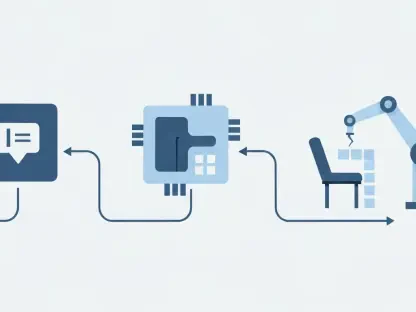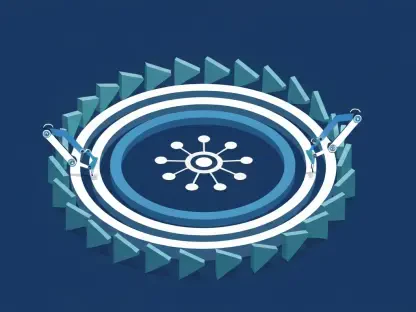In recent years, deep learning has emerged as a cornerstone technology in transforming the fields of physics and engineering. This computational paradigm, inspired by the structure and functioning of the human brain, leverages artificial neural networks to address complex problems that were previously intractable with conventional methods. The interplay between deep learning and these scientific disciplines is reshaping how tasks are performed and solutions are found, driving a profound shift in design, optimization, and analytical processes. One prominent figure in this revolution is Robin Tuluie, the founder of PhysicsX, a company at the forefront of applying deep learning in these domains. His work underscores the potential of deep learning to significantly advance structural optimization across various sectors, including aviation, automobile, and renewable energy, thus heralding a new era of precision and efficiency in engineering solutions.
The Integration of Deep Learning in Engineering Analysis
Deep learning’s integration into engineering begins with its ability to perform complex analyses rapidly and accurately. Traditionally, simulations in engineering involved extensive computational resources and time-consuming processes, particularly in structural optimizations of intricate designs like aircraft wings or turbine blades. Engineers relied on supercomputers to run numerous simulations, often taking days or even weeks, to assess the impact of subtle changes in design. However, deep learning models have introduced a groundbreaking shift by performing similar tasks in mere seconds without sacrificing accuracy. This innovation allows engineers to conduct real-time optimizations, expediting the design cycle while reducing computational costs. Businesses can now rapidly iterate on designs, leading to more efficient use of materials and energy, ultimately contributing to more sustainable engineering practices.
PhysicsX employs large-scale physics and geometry models paralleling the operational logic of frameworks like OpenAI’s ChatGPT, aiming to predict complex interactions such as fluid dynamics and airflow. The models draw from extensive datasets encapsulating detailed physics, geometry, and spatial relationship information, allowing them to predict with unprecedented precision. Deep learning’s capabilities shine in its ability to learn non-linear dynamics and interpolate complex interactions, which traditional algorithms struggle to achieve with similar effectiveness. These advancements exemplify a shift away from deterministic simulation to predictive modeling, where neural networks offer engineers new tools to explore vast design spaces efficiently, uncovering robust and optimal solutions to complex engineering challenges.
Advanced Modeling Techniques and Discovering Novel Designs
A notable innovation in this transformative landscape is the concept of “deep geometry models,” an approach that utilizes geometry to inform physics rather than merely serving as a set of geometric parameters. This methodology involves using a geometrical mesh that envelops the structure, providing data points at every intersection. By generating millions of mesh points, these models facilitate a comprehensive examination of potential designs. This extensive mesh facilitates models to traverse and optimize the geometry of not only man-made structures but also organic forms such as bird wings or insects. The profound implications of this capability lie in its potential to discover entirely new and efficient geometries that maintain structural integrity while optimizing performance.
The exploration of what is termed “white space”—the uncharted territories between known designs—enables groundbreaking discoveries in aerodynamic performance and structural safety. This approach can potentially lead to innovations in engineering design that were previously unimaginable. Through harnessing the capabilities of deep learning, industries can explore design possibilities that push the boundaries of what is feasible within traditional engineering frameworks. This opens the door not only for enhancing the efficiency and performance of existing designs but also for fostering innovation in sectors like aerospace, automotive, and renewable energy, where the smallest optimization can yield significant gains in performance and sustainability.
The Influence of Expertise and Collaborative Environments
Beyond technological advancements, the role of expertise and collaborative environments in fostering these breakthroughs is undeniable. Robin Tuluie’s career trajectory illustrates this point, as his journey from postdoctorate research at Penn State to leading roles in Formula 1 and luxury car manufacturing exemplifies the fusion of profound scientific knowledge with practical engineering applications. By applying his understanding of numerical modeling, honed during his study of cosmic microwave background radiation, to industry settings, Tuluie has pioneered innovations that drive forward both physics and engineering disciplines. His work at PhysicsX highlights the synergy achievable when deep learning technology is combined with domain expertise and practical experience.
Events such as the Institute for Gravitation and the Cosmos (IGC) Alumni and Friends Reunion serve as hubs for collaboration and exchange among experts. These gatherings foster an environment where multidisciplinary approaches thrive, blending particle physics, astrophysics, mathematics, and computation. This integration forms a breeding ground for innovative ideas and groundbreaking research. By marrying varied scientific perspectives with cutting-edge technology, these collaborative platforms create opportunities to explore new scientific territories while expediting technological advancements that have profound implications across physics and engineering fields.
A Pathway to Future Innovation and Exploration
Deep learning has revolutionized engineering by enabling swift and precise analysis of complex problems. Traditionally, simulations required significant computational power and lengthy processes, especially when optimizing intricate structures like aircraft wings or turbine blades. Engineers often depended on supercomputers to conduct multiple simulations, taking days or weeks to evaluate minor design changes. Deep learning models have dramatically transformed this landscape by completing similar tasks in mere seconds without losing accuracy. This breakthrough allows real-time optimization, speeding up the design cycle and reducing computational expenses. Companies can now iterate designs quickly, enhancing material and energy efficiency, fostering sustainable engineering.
PhysicsX takes this further by using large-scale physics and geometry models, similar to OpenAI’s ChatGPT logic, to predict complex interactions like fluid dynamics with great precision. These models leverage vast datasets of detailed physics and spatial information to predict outcomes traditional algorithms can’t replicate. This shift from deterministic simulations to predictive models empowers engineers to efficiently explore design spaces, uncovering resilient and optimal solutions to engineering challenges.









